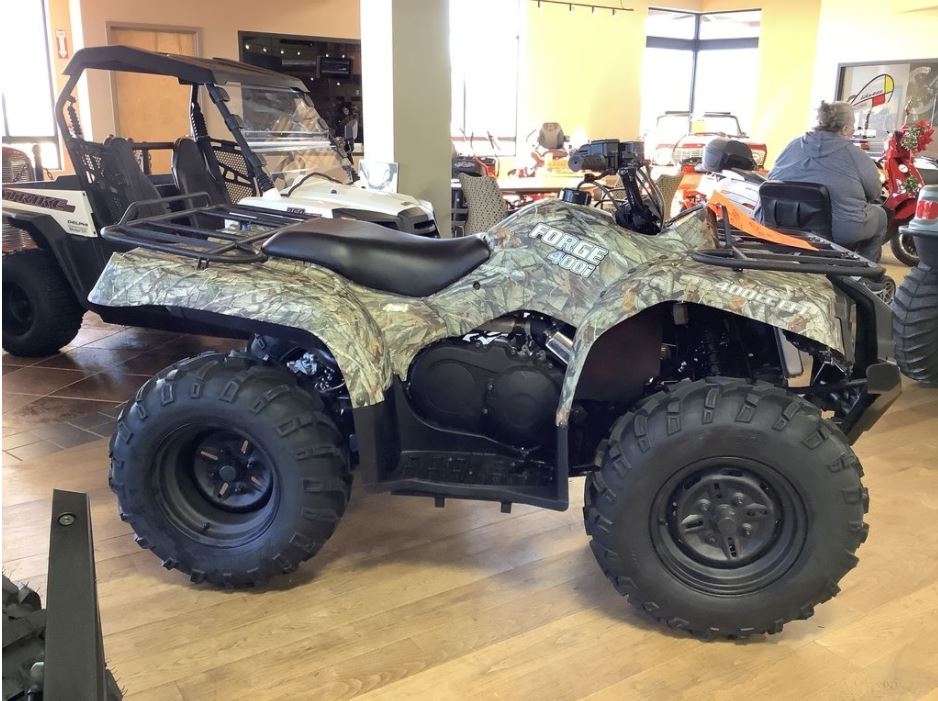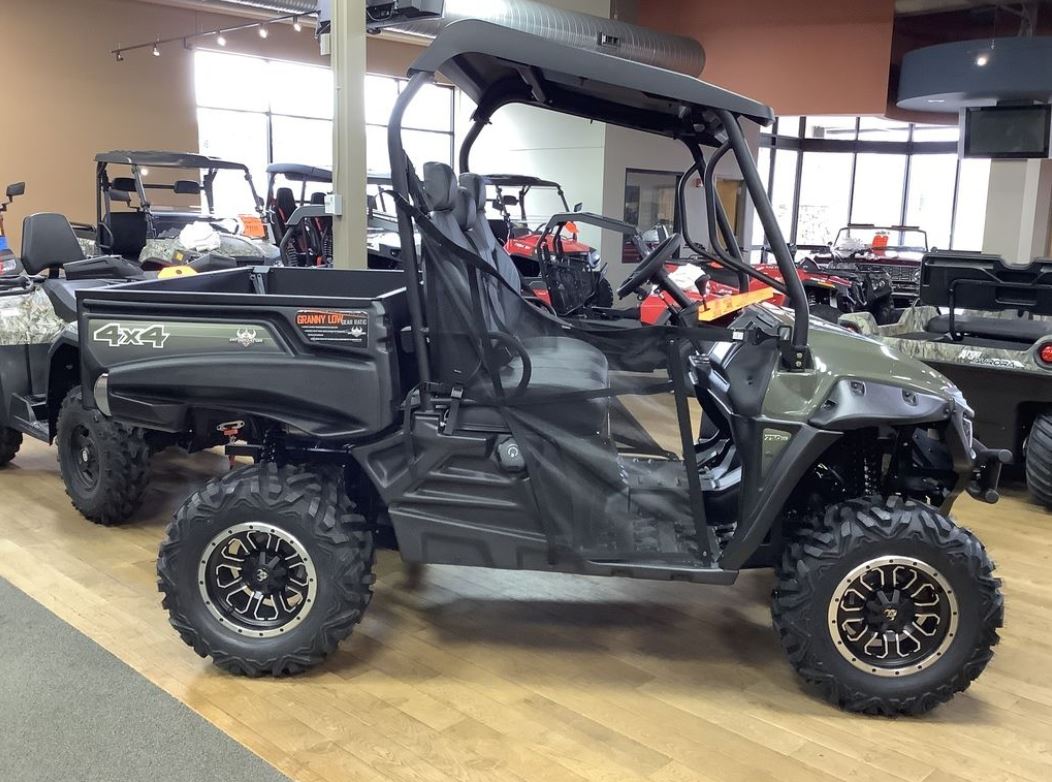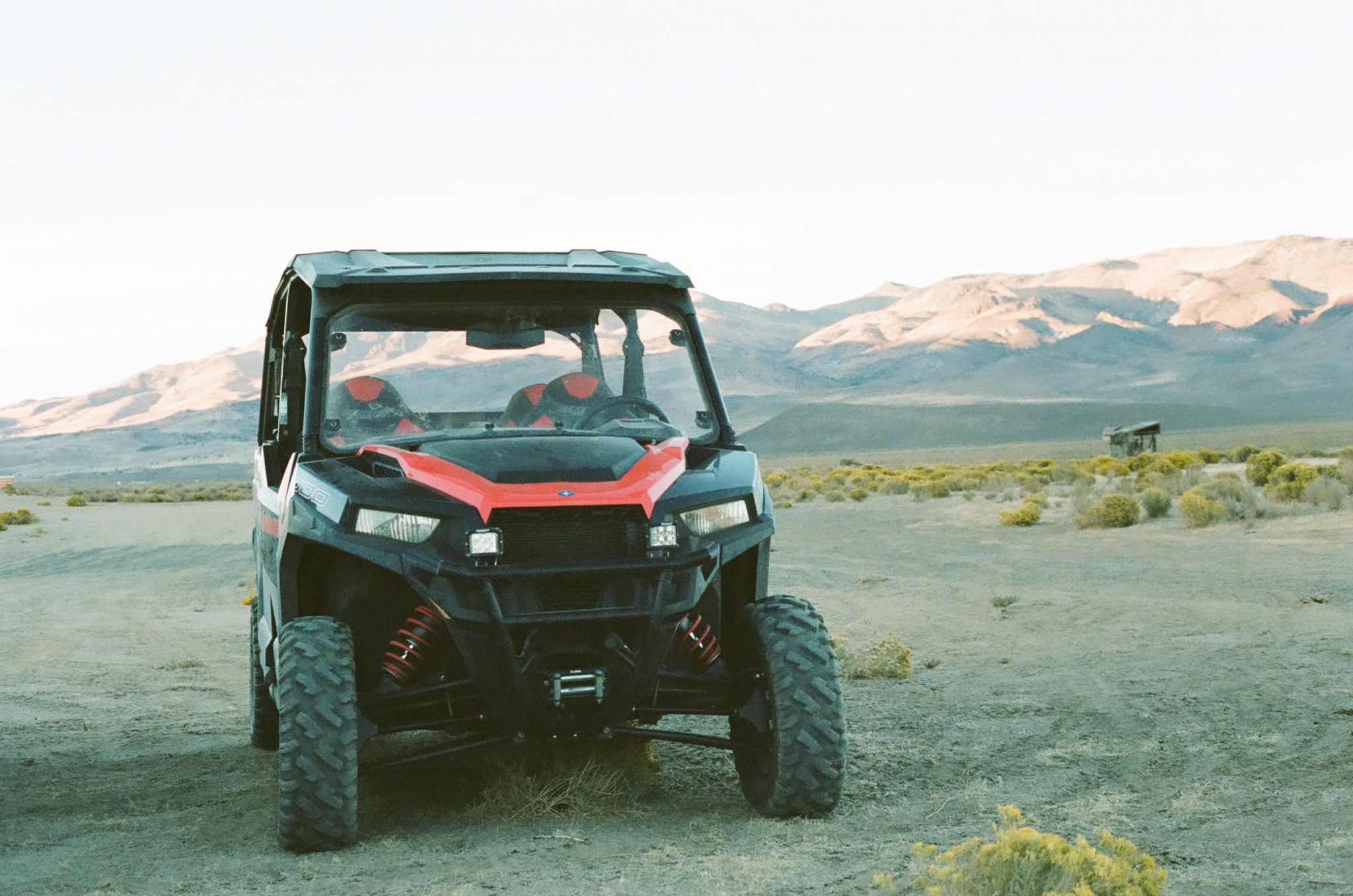ATVs and UTVs are different, despite hailing from the same general family of vehicles. If you’re looking for something to go off-roading on your property or to take hunting with you, you want to choose the right option for the task because their formats are completely different.
Once you learn about their differences and similarities, it will be obvious to you which one you should consider purchasing from your local powersports dealership to make your hobbies or work both more enjoyable and easier.
All About ATVs
ATV stands for all-terrain vehicle. An ATV has a straddle seating position and handlebar steering, much like a motorcycle. It can nimbly maneuver through harsh terrain on its three or four tires. In fact, you might have heard of some ATVs referred to as “four-wheelers,” depending on where you’re from.
When driving an ATV, you sit astride the seat, with one leg on each side of the vehicle. Normally, ATVs carry one rider, but some are able to carry an additional passenger, seated behind the driver. The passenger also straddles the seat and holds onto the driver to remain secure while the ATV is in motion.

When choosing an ATV for sale, take into consideration the size of the vehicle. ATVs come in a range of sizes, which must be suited to the operator. For example, a man who is more than six feet tall will need a different-sized ATV than a petite woman. An incorrectly-sized ATV can be dangerous at worst or simply uncomfortable at best.
Your new ATV will come from the factory with a thumb throttle, which controls acceleration. Some people prefer a twist throttle, which lets you speed up by twisting a handle on the handlebars. However, twist throttles can make it harder to control the vehicle because many operators accidentally crank on the throttle as their body changes position going downhill, around corners, or over a particularly rocky area of trail. With a twist throttle, it’s very easy to find yourself thrown from the vehicle when you accidentally accelerate or decelerate at an inopportune time. ATV brakes are usually a brake handle or foot pedal.
ATVs do not come with built-in safety equipment. It is up to the owner and operator to wear a helmet and other protective gear to help prevent injury. Responsible operation also can increase safety while aboard an ATV.
All About UTVs
UTV stands for utility terrain vehicle. Sometimes they are called side-by-sides because your passenger sits on the bench seat next to you in the cabin area of the vehicle. While the ATV is ideal for recreation, a UTV is best suited for work or performing specific tasks, like hauling equipment to places a standard-sized vehicle can’t reach.
UTVs have four wheels and operate like a car. Drivers steer with a round steering wheel and use two foot pedals to accelerate and decelerate. Because of the UTV’s set-up like a traditional vehicle, it is quite easy to learn how to operate one. If you can drive a car, truck, or SUV, you can drive a UTV.
UTVs can go faster than ATVs – up to 50 miles per hour – but they aren’t as nimble in tight areas or over rough terrain. Unlike ATVs, however, UTVs come standard with seatbelts, and owners can choose to add other safety equipment, like a windshield or roll bar.

If you have work to get done on the farm or ranch, like hauling feed for livestock, or if you are looking for a vehicle to serve as a hunting buggy, a UTV will likely meet your needs. In fact, it’s not at all uncommon for the outdoorsman to look for a side by side for sale! But UTVs aren’t just for agricultural needs or outdoor sports; lots of other industries, including education, factories, and warehouses, employ UTVs to help them accomplish their tasks.
Which is Right for You?
If you’re considering purchasing either an ATV or UTV, most powersports experts will advise you to do plenty of research before making your decision. While you might be able to accomplish what you’re looking to do on an ATV, a UTV might make it easier, or vice versa.
With so many makes, models, and sizes of ATVs and UTVs available, it’s worthwhile to test drive a few options to narrow down your list to a top three or top five. Using the information you’ve gathered, you’ll make a wise decision that you won’t regret!


